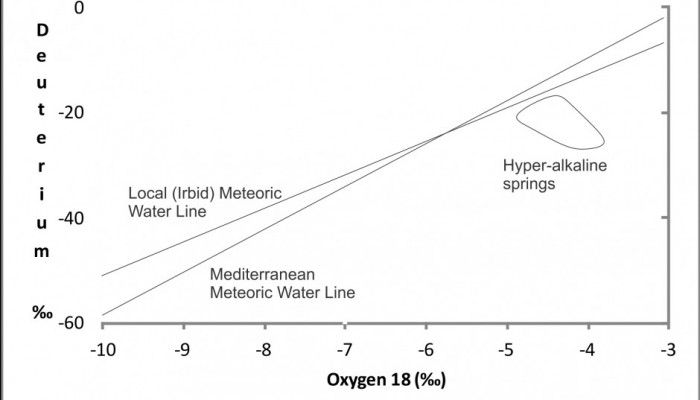Day 2 of Goldschmidt 2013 is done and what a great day it was. Hectic, but conferences always are. There is just so much to see and do, so many people to talk to and so many people to meet for the first time that it can be a bit overwhelming. The best thing to do is grab a coffee, and dive right in. My first talk of the day was by J. Schmitt and was called CF4 and CO2 – Coupling Weathering and Car ...[Read More]
If you didn't find what you was looking for try searching again.
Soil System Sciences
Ladies and gentlemen: the Rolling Stones
Racetrack Playa is a plain without vegetation of a dry located above the northwestern side of Death Valley, in Death Valley National Park, Inyo County, CA, USA (click here to see in Google Maps). Although “playa” is the Spanish word for beach, it is also used in English to refer to a dry lake. Racetrack Playa occupies an area of 4.5 km (north-south) by 2 km (east-west) which is 1,130 m ...[Read More]
GeoLog
Vegetation research in Finnish Lapland: mountains, sunshine and reindeer
People started warning me about the mosquitoes back in April. It sounded grim. But when I arrived in Finnish Lapland in August, the mozzies had peaked earlier in the season when temperatures were unusually high, and were all dead. This was a fortunate escape: Miska Luoto of the University of Helsinki and his team of researchers, who I was following as part of an EGU Science Journalism Fellowship, ...[Read More]
GeoLog
Resource site for young scientists launched!
Early career researchers make up a large proportion of the EGU membership and students (both graduate and undergraduate) regularly make up about a third of General Assembly participants. With so many young scientists involved in the EGU, it’s time we had something that caters for them – the young scientists’ website! The new website is a hub of information on jobs, events and resources that ...[Read More]
Geology for Global Development
Professionalism and Social Responsibility (5): Some thoughts on disseminating research
Over the past few weeks we’ve looked at a number of important factors concerned with being geologists that have a high degree of professionalism and social responsibility. These posts have included a number of practical tips on writing, preparing reports and undertaking fieldwork overseas and in different cultures. Today we explore the importance of disseminating research. You’ve under ...[Read More]
Between a Rock and a Hard Place
Supervisor profile – Professor Mike Kendall
Professor Mike Kendall Professor in Earth Sciences School of Earth Sciences, University of Bristol PhD (1992) “Contributions to the theory and modelling of seismic waves in anisotropic inhomogeneous media” Supervisor: Prof. C.J. Thomson 1) The Twitter challenge: Describe your PhD in 140 characters (if you can remember it) Developed theory and numerical methods to track seismic waves th ...[Read More]
Four Degrees
Melting, microbes and methane: Are we about to face a carbon apocalypse?
Marion Ferrat takes a look under the frozen layers of Arctic permafrost and discusses how these soils may come back to haunt us. The vast plains of Siberian or Canadian permafrost are a sight to behold. Hundreds, sometimes thousands of miles of frozen soils cover these lands, a cold and barren environment. In places, however, this permafrost is slowly melting away as a result of rising temperature ...[Read More]
GeoLog
Imaggeo on Mondays: A clash of hard and soft landscapes
This week’s Imaggeo on Mondays is brought to you by the photographer himself, who describes the striking scenery of the Conwy estuary in Wales… After a workshop with salt-marsh specialists in Conwy (Wales, UK), I stayed a couple of days to explore the surroundings. Living and working in The Netherlands, for me intertidal areas are typically wide, flat expanses of land, where the horizon is far awa ...[Read More]
GeoLog
Geosciences Column: Autofluorescence in polar regions – how and why?
Marine picoplankton, <2 µm, are one of the most ubiquitous fauna in the open ocean. These marine microorganisms are hugely important – being responsible for a significant proportion of oceanic net primary productivity. Researchers are able to track the evolution of their genomes and the transportation of these microorganisms by analysing ice cores, which offer the potential to study the evoluti ...[Read More]
GeoSphere
The Mysteries of Maqarin
We all know that cement is a man-made substance and therefore cement is always synthetic right? Wrong! In the unusual case of Maqarin, Jordan the stars aligned to produce natural cement and many of the “synthetic” minerals found therein. The Maqarin site has been the subject of an intense geological investigation by a consortium of over 100 researchers for years in an attempt to try an ...[Read More]

